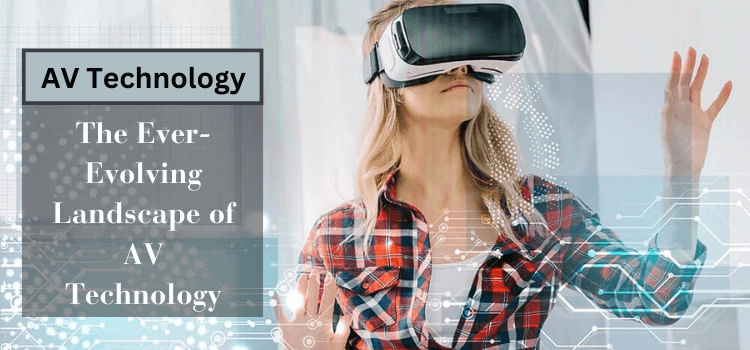The video production industry thrives on innovation, with AV technology playing a pivotal role in shaping its trajectory. This article delves into the latest trends in AV technology that are revolutionizing the industry. One such trend is the rise of high-resolution displays, such as 4K and even 8K screens, offering filmmakers and content creators unprecedented visual clarity and detail. Additionally, advancements in virtual reality (VR) and augmented reality (AR) have opened up new creative possibilities, allowing for immersive storytelling experiences and interactive elements in videos. The integration of AI and machine learning has also impacted the industry, enabling automated video editing, advanced analytics, and real-time content personalization. Moreover, the growing demand for live streaming has led to the development of more sophisticated and reliable streaming solutions, facilitating real-time audience engagement. These trends, among others, are reshaping the video production industry, pushing the boundaries of creativity, and offering exciting opportunities for filmmakers and content creators to captivate audiences with cutting-edge AV technology.

Immersive Technologies: Virtual Reality (VR) and Augmented Reality (AR)
For an event production company, the adoption and integration of virtual reality (VR) and augmented reality (AR) technologies have brought about a revolution in storytelling and visual experiences. These immersive technologies open up new possibilities for content creators to engage audiences on a deeper level. VR enables viewers to step into a virtual world, providing a truly immersive and interactive experience. Filmmakers are utilizing VR to transport audiences to breathtaking locations, historical events, or fictional realms, offering a heightened sense of presence and engagement. On the other hand, AR overlays digital elements onto the real world, blending the physical and digital realms seamlessly. This technology is being incorporated into video projects to enhance visualizations, provide interactive elements, and create captivating and memorable experiences for viewers. With the adoption of VR and AR, video is pushing boundaries, expanding creative possibilities, and delivering innovative and immersive storytelling experiences.
4K and Beyond: High-Resolution Video and Display
The prominence of high-resolution video production and display technologies has become increasingly apparent in the production scene. The rise of 4K and even higher-resolution content brings exceptional visual quality, allowing for immersive and detailed viewing experiences that captivate audiences. However, with the benefits of high-resolution content come challenges that professionals must address. These challenges include the need for powerful hardware and storage capabilities to handle the large file sizes associated with high-resolution footage, as well as the demand for efficient post-production workflows that can handle the increased processing requirements. Additionally, ensuring the seamless delivery of high-resolution content across various platforms and devices while maintaining optimal streaming quality requires careful attention to encoding, bandwidth considerations, and compatibility. Despite these challenges, the pursuit of high-resolution content continues to push the boundaries of visual storytelling and elevate the overall quality of video experiences.
Live Streaming and Remote Production
Live streaming and remote production have witnessed a surge in popularity. With advancements in technology, high-quality live streaming has become more accessible and reliable, allowing content creators to engage audiences in real-time regardless of their location. This shift has revolutionized audience engagement, as viewers can actively participate in events, conferences, and performances, fostering a sense of inclusivity and interactivity. Moreover, remote production has empowered producers to collaborate with talents, crew members, and clients from around the world, expanding their creative reach and global presence. The ability to seamlessly connect and collaborate remotely has transformed the way video productions are planned, executed, and delivered.
Artificial Intelligence (AI) and Machine Learning (ML) in AV
AI and ML technologies are integrated into AV systems and workflows. Automated editing, content analysis, and recommendation systems are just a few examples of how AI and ML are transforming video production. Incorporating these technologies enhances efficiency, accuracy, and personalization in AV workflows.
Cloud-Based Workflows and Collaborative Tools
The video production industry is experiencing a shift towards cloud-based workflows and collaborative tools. Cloud-based storage, editing, and collaboration platforms offer advantages such as scalability, flexibility, and remote collaboration. These technologies streamline workflows and empower producers to work seamlessly across locations.
Interactive and Personalized Experiences
Interactive and personalized AV experiences are on the rise. Touchscreens, gesture recognition, and personalized content delivery are transforming how audiences engage with content. Today, these technologies have significant impacts on audience engagement, brand experiences, and the overall success of video productions.
Sustainable and Green AV Practices
Sustainable and green practices are gaining importance for video production in San Francisco. Energy-efficient equipment, eco-friendly production practices, and recycling initiatives contribute to environmental responsibility. By adopting sustainable practices, video production companies uphold industry standards and minimize their ecological footprint.
Integrating AV with Internet of Things (IoT) and Smart Environments
AV technology is converging with IoT and smart environments. AV systems are integrated with IoT devices, sensors, and automation, creating intelligent and immersive environments. This integration in San Francisco enhances the overall AV experience and opens up new possibilities for creating dynamic and interactive spaces.
The video production industry is continually shaped by the latest trends in AV technology. Staying informed and embracing these advancements is crucial for professionals to stay competitive and deliver exceptional experiences to their clients. By leveraging the latest AV trends, video production companies can push boundaries, create innovative content, and captivate audiences in an ever-evolving landscape.






Leave a Reply